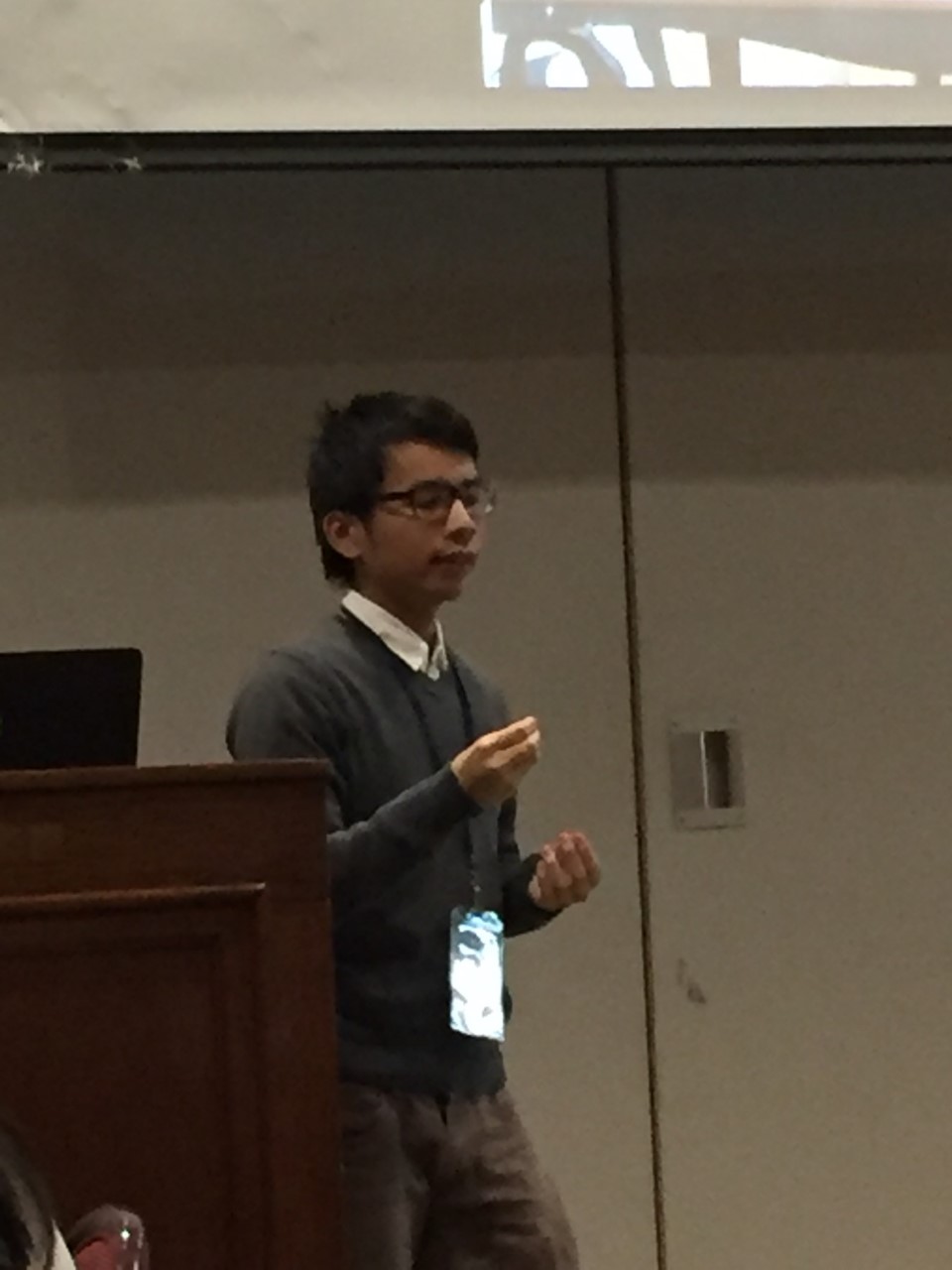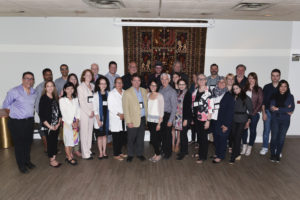Home » University Teaching (Page 2)
Category Archives: University Teaching
Using Mentimeter to Discuss Current Educational Issues
In my Teaching and Learning, Part 1 class (EDUC119B), I recently used Mentimeter (www.menti.com) in a large class (110 students), which meets in our large lecture hall in the Education Building. This class is recorded for students unable to make class.
Students created a class-wide word cloud in response to the question, “what are the current educational issues facing teachers today? This was done as a follow-up to a guest lecture presented by Dr. Lyndsey Jaber, a school psychologist with the Greater Essex County District School Board, on the topic “Bullying: Definition and Implications.”
They then held two group discussions that included: a) identify the top 5 issues facing teachers today and indicate your reason for selected these iss

ues, and b) select one of your issues and discuss how you would handle this issue during your classroom observation. A short Blackboard quiz was used to assess student learning.
Here is a link to the word cloud students created, which I subsequently posted to our Blackboard course page.
After being empowered by Dr. Jaber’s presentation, students were able to bring it into their area of interests by way of the creation of the Mentimeter word cloud and the subsequent discussions we had during the second part of class. What made this work particularly well was the speed by which the cloud developed and the observation that others in the class picked some of the same issues, which led to the group discussions that followed. So rather than lecturing about the educational issues facing teachers, the class was able to discover these issues and then share their thoughts about the top vote getters. Very powerful and impactful!
Probably the only issues we faced were that not everyone had a phone or laptop so some students partnered up, and the focus of the group discussions were probably impacted by the extroverts in the group, and may have resulted in some students not weighing in on their top issues of concern.
In reflection, when I do this again I am thinking about asking students to write a one minute essay on an issue they believe strongly about, which they can upload to Blackboard during class. That way I can be sure to give voice to all students on this important topic.
Clayton Smith
Creating Undergraduate Student Research-based Learning Experiences

George Kuh (2008) tells us that there are 11 teaching practices that have high impact on student learning. These include: first-year experiences, common intellectual experiences, learning communities, writing-intensive courses, collaborative assignments and projects, undergraduate research, diversity/global learning, service learning/community-based learning, internships, capstone courses/projects, and ePortfolios. Students who benefit from these teaching practices “earn higher grades and retain, integrate, and transfer information at higher rates” (p. 14). Some of the common characteristics of these HIPs:
- Demand that students commit considerable time and effort to” purposeful tasks”;
- Demand they interact with faculty and peers about academic matters over extended periods of time;
- Increase the likelihood that students will experience diversity through contact with people who are different from themselves;
- Provide students with frequent feedback about their performance;
- Provide opportunities for students to see how what they are learning works in different settings, both on and off campus; and
- Provide life changing experiences for students
William Cronon (1999) captured the essence of HIPs when he wrote:
More than anything else, being an educated person means being able to see connections that allow one to make sense of the world and act within it in creative ways. Every one of the qualities I have described here–listening, reading, talking, writing, puzzle solving, truth seeking, seeing through other people’s eyes, leading, working in a community–is finally about connecting (p. 12).
Today I would like to focus on one of the HIPs, undergraduate research. Universities are increasingly providing research experiences for undergraduates that engages students with “actively contested questions, empirical observation, cutting-edge technologies, and the sense of excitement that comes from working to answer important questions” (Kuh, 2008, p. 10). This leads students to benefit from each of the HIP common characteristics noted above. For a long time, this educational activity was limited to graduate students. But now, we are seeing undergraduates also benefit from research as learning by “listening, reading, talking, writing, puzzle solving, truth seeking, seeing through other people’s eyes, leading, working in a community”; all of which results in them connecting to each other and the world in some very meaningful ways.

For many years, we have had a wonderful program at the University of Windsor, Outstanding Scholars, which sees undergraduate students engage with faculty members on important research projects outside of the classroom. Students are paid to work in a research placement for up to six semesters. During that time they have the opportunity to be mentored in their discipline, and to get to know faculty much better than they would in the classroom only. This semester I have had an opportunity to work with one of our scholars on a project involving supporting an international student learning community research project on finding the connection between student satisfaction and perceptions of learning with the promising teaching for teaching international students. Miranda Pecoraro has worked closely with graduate and undergraduate students, faculty members, and research staff as she developed enhanced collaboration, communication, and quantitative knowledge with regard to developing a research project. It has been a pleasure watching her challenge herself and grow both personally and professionally throughout the semester. I am especially pleased that she will be continuing with the project.
This week I had the pleasure of participating as a judge in the University of Windsor’s UWILLDiscover Conference. This is a conference that takes undergraduate research a step further by combining it with the research output of graduate students. At this year’s conference, we saw Faculty of Education undergraduates present on their experiences traveling to China as part of our Reciprocal Learning Program. There were posters presented on a range of topics where undergraduates, graduate students, and staff/faculty supervisors presented with undergraduate students. And we also saw separate but equally well developed presentations made throughout the four days of the conference by both undergraduate and graduate students. Added to all of this, the conference was managed by a large group of student volunteers working under the guidance of Dr. Phil Wernette.
Perhaps the next step is to find ways to combine in-class learning with research engagement in ways that remove the lines for student learning in between the classroom and the extracurriculum. If this interests you, drop me a comment. I would be interested in how you are creating dynamic research-based learning experiences for undergraduate students across the student experience.
Clayton Smith
References
Cronon, W. (1999). Only connect: The goals of a liberal education. Liberal Education, 85(1),
Kuh, G. (2008). High-impact educational practices: What they are, who has access to them, and why they matter. Washington, DC: Association of American Colleges and Universities.
Finding the Connection

Colleges and universities in the U.S. and Canada are increasingly becoming ethnoculturally and linguistically diverse which is partially due to increasing enrolment of international students. Currently, 1.4 million international students choose to study at Canadian and U.S. post-secondary educational institutions, which increased by 7.1 percent between 2015 and 2016 (Canadian Bureau of International Education, 2016; Institute of International Education, 2016).
Currently, campus internationalization initiatives focus primarily on external areas including education abroad and student exchange, recruiting international students, and institutional partnerships. However, this is expected to change as more institutions are developing academic-related internationalization initiatives (e.g., international or global student learning outcomes, related general education requirements, foreign language requirements). A growing number of institutions are increasing faculty engagement in internationalization efforts. To do this, faculty will need to critically examine their role in campus internationalization and implement teaching strategies that address international student success factors.
In a recent study, we explored the promising teaching practices for teaching linguistically and culturally-diverse international students by identifying the teaching practices that have high levels of international student satisfaction and student perceptions of learning. This study is based on the belief that the most effective teaching practices are where promising teaching practices, student satisfaction, and student perceptions of learning meet.
We found that the promising teaching practices identified as having high levels of student satisfaction also have medium/high student perception levels of learning. We also found a positive correlation between student satisfaction and student perceptions of learning for each of the promising teaching practices. In particular, fourteen correlations were reported at the .700 level or higher, suggesting a strong positive correlation, including assessing needs, assignments, clarifying expectations, class preparation, culturally-responsive teaching, feedback, and language proficiency. Our hope is that faculty who engage in these teaching practices will become more engaged in campus internationalization and improve international student success on their campuses.
We are currently engaged in a student-informed research project that will see us compare international student satisfaction for STEM (Science, Technology, Engineering, and Mathematics) and non-STEM international students to learn more about why STEM and non-STEM students have different views on the effectiveness of the promising teaching practices.
For more information and to follow our project, here is the link to our research web page.
Yours internationally,
Clayton Smith
References
Canadian Bureau of International Education (2016). A world of learning: Canada’s performance and potential in International education. Ottawa: CBIE.
Institute of International Education (2016). Open doors 2016. New York, NY: IIE.
Taking the Plunge

After more than 30 years engaged in higher education administration in the U.S. and Canada, I took the plunge and returned to my teaching roots. And what an adventure it has been!
I took nearly everything that our Centre for Teaching and Learning offered as a way of rebooting and modernizing my approach to teaching. This took me through the Certificate in University Teaching, Blackboard Boot Camp, the Teaching Dossier Academy, and lots more. I learned about SoTL and scholarly teaching. It resulted in me adopting “teaching for learning” as my teaching style, which, of course, was a perfect match to my dean of students’ experiences putting students first in all we do.
More recently, I have explored the open practice world with the help of our Office of Open Learning. It has left me inspired to move away from traditional pedagogies and adopt a more open path to teaching and learning. This led me to explore educational technologies, curation, collaboration, experimentation, and scholarship related to open practice. I am even currently considering the development of an Open Educational Resource for one of my courses and have now created an ePortfolio!
The combination of “teaching for learning” and entering the open learning world has led me to want to learn more about how we as educators, teachers, researchers, and supporters of student learning can more fully centre our work on enhancing student learning.
Where this adventure will lead me, I do not know. What I hope is that it will make me a better teacher, facilitator, mentor, and coach for my students.
I cannot wait to experience what is next on my journey.
From time to time, I will write in this blog about my experiences. Maybe you will tune in and reflect with me about how you incorporate “teaching for learning” and open learning pedagogies in your teaching.
Join me!
Clayton Smith
Recent Comments